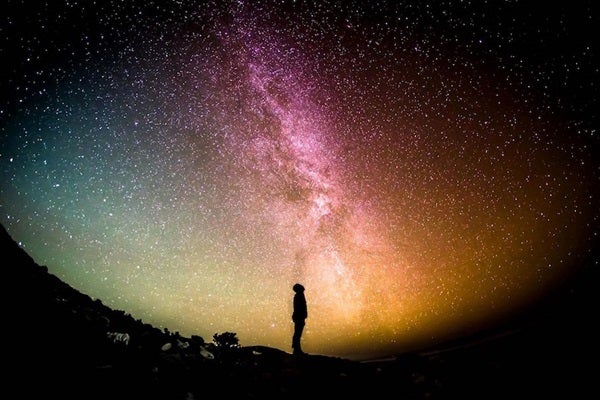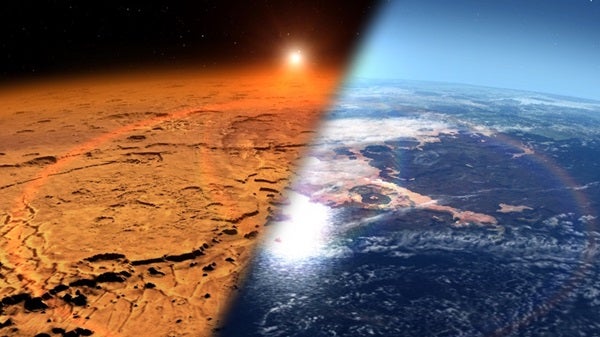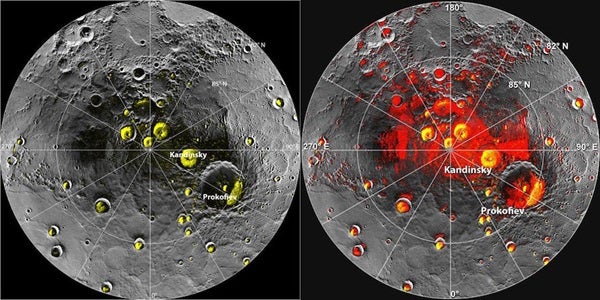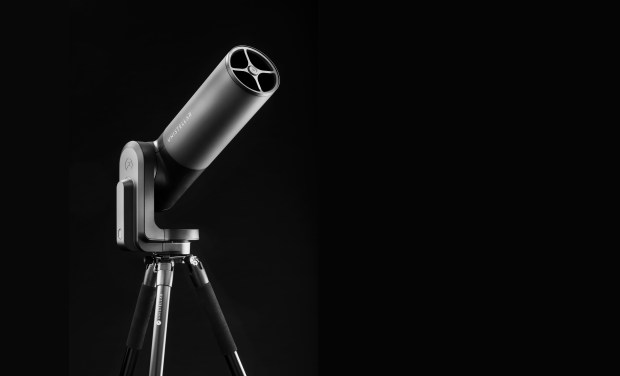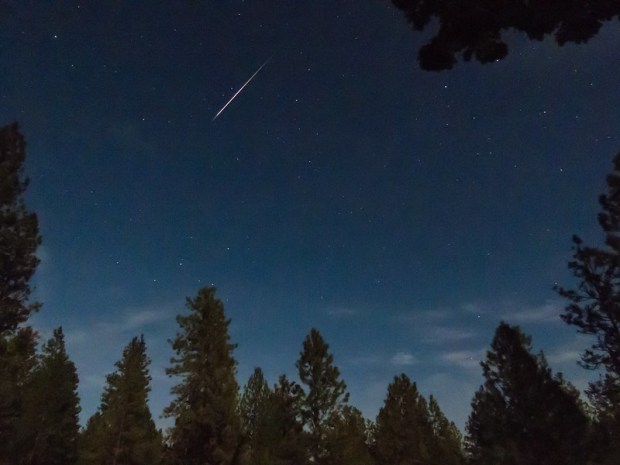Although Jupiter reached opposition and peak visibility in early May, it remains a conspicuous object from evening twilight until it sets around 9:30 p.m. local daylight time. Jupiter shines at magnitude –1.9 and dominates the southwestern sky after Venus sets around 8:30 p.m. The gas giant resides among the background stars of Libra the Scales; this evening, it lies 4° due east of Zubenelgenubi (Alpha [α] Librae). If you view the planet through a telescope, its disk spans 34″ and displays stunning cloud-top detail.
Saturday, September 15
The Moon’s absence from the morning sky this week provides observers with a nice opportunity to see the zodiacal light. From the Northern Hemisphere, the time around the autumnal equinox is the best for viewing the elusive glow before sunrise. It appears slightly fainter than the Milky Way, so you’ll need a clear moonless sky and an observing site located far from the city. Look for a cone-shaped glow that points nearly straight up from the eastern horizon shortly before morning twilight begins (around 5 a.m. local daylight time at mid-northern latitudes). The Moon remains out of the morning sky until September 18, when the waxing gibbous returns and overwhelms the much fainter zodiacal light. If you miss the light this week, you’ll have another chance to see it during October.
Sunday, September 16
First Quarter Moon arrives at 7:15 p.m. EDT. Our satellite rises in the southeast around 2 p.m. local daylight time, but it doesn’t become prominent until the Sun sets around 7 p.m. (The Moon then lies due south and about one-third of the way to the zenith.) After darkness falls, the Moon’s half-lit orb appears in southeastern Ophiuchus, to the right of Saturn and its host, Sagittarius the Archer.
Mars continues to put on a great show these September evenings. The Red Planet appears in the south-southeast as darkness falls and climbs highest in the south around 9:30 p.m. local daylight time. The world shines at magnitude –1.7, almost imperceptibly fainter than Jupiter. When seen through a telescope, surface features on the 18″-diameter disk continue to sharpen as the global dust storm dissipates. Mars currently lies among the dim background stars of southwestern Capricornus. And at 9 a.m. EDT today, the planet reaches perihelion — its closest approach to the Sun during its 1.88-year orbit — when it lies 128.4 million miles from our star.
The waxing gibbous Moon stands 4° to Saturn’s upper left this evening. Although bright moonlight hampers observations of the ringed planet, wait a day or two for it to move away and return Saturn to its glory. The planet lies nearly due south and at its highest altitude as darkness falls this week. It shines at magnitude 0.4, more than a full magnitude brighter than any of the background stars in its host constellation, Sagittarius. If you own a telescope, there’s no better target than Saturn. Even the smallest instrument shows Saturn’s 17″-diameter disk surrounded by a dramatic ring system that spans 38″ and tilts 27° to our line of sight.
Tuesday, September 18
Asteroid hunters have a great opportunity to spot Vesta in the vicinity of one of the Milky Way’s brightest star-forming regions this week. The 7th-magnitude minor planet resides in western Sagittarius, a region currently hosting the major planet Saturn. Vesta lies a few degrees southwest of Saturn. But of even more interest, the asteroid lies less than 2° southwest on the Lagoon Nebula (M8) tonight. On Friday evening, Vesta will slide 1° due south of the Lagoon.
Although autumn arrives with the equinox this coming weekend, the Summer Triangle remains prominent in the evening sky. Look high in the west after darkness falls and your eyes will fall on the brilliant star Vega in the constellation Lyra the Harp. At magnitude 0.0, Vega is the brightest member of the Triangle. The second-brightest star, magnitude 0.8 Altair in Aquila the Eagle, lies some 35° southeast of Vega. The asterism’s dimmest member, magnitude 1.3 Deneb in Cygnus the Swan, stands about 25° east-northeast of Vega. For observers at mid-northern latitudes, Deneb passes through the zenith around 10 p.m. local daylight time, nearly 90 minutes after the last vestiges of twilight have disappeared.
Wednesday, September 19
The waxing gibbous Moon stands 4° above Mars in this evening’s sky. The two make lovely companions from twilight until they set near 2 a.m. local daylight time.
The Moon reaches apogee, the farthest point in its orbit around Earth, at 8:53 p.m. EDT. It then lies 251,578 miles (404,876 kilometers) from Earth’s center.
Thursday, September 20
Saturn and its rings always look wonderful when viewed through a telescope, but this evening provides a great opportunity to target the planet’s moons through an 8-inch or larger instrument. Two inner moons — 12th-magnitude Enceladus and 13th-magnitude Mimas — reach greatest eastern elongation within an hour of each other and show up under good viewing conditions. (The bright glare of the rings normally masks these moons when they lie closer to the planet.) The two stand just beyond the rings’ edge halfway between the 10th-magnitude satellites Dione and Tethys.
Mercury reaches superior conjunction at 10 p.m. EDT. This means the innermost planet lies on the opposite side of the Sun from Earth and remains hidden in our star’s glare. It will return to view in the evening sky, though just barely, in late October.
Venus peaks at magnitude –4.8 this evening, shining brighter than at any other time during this evening apparition. (The difference is essentially imperceptible, however — it appears only a thousandth of a magnitude brighter today than it did yesterday or will tomorrow.) Venus lies only 5° high in the southwest a half-hour after sundown, however, so you’ll have to look for it from a site with an unobstructed horizon. As the inner planet swings closer to a direct line between the Sun and Earth, its telescopic appearance changes quickly. Tonight, Venus’ disk spans 40″ and appears about one-quarter lit.
Saturday, September 22
With the days growing shorter and kids back in school, it shouldn’t be surprising that summer’s reign is just about over. The warmest season comes to an official close at 9:54 p.m. EDT, when Earth reaches the autumnal equinox. This marks the moment when the Sun crosses the celestial equator traveling south. Our star rises due east and sets due west today. If the Sun were a point of light and Earth had no atmosphere, everyone would get 12 hours of sunlight and 12 hours of darkness. But the air and finite size of our star make today a few minutes longer than 12 hours.
Sunday, September 23
Uranus reaches opposition one month from today, but it already has become a tempting evening target. The ice giant world rises before 9 p.m. local daylight time and climbs some 30° above the eastern horizon by 11 p.m. The magnitude 5.7 planet lies in southwestern Aries, 12° south of the Ram’s brightest star, 2nd-magnitude Alpha (α) Arietis. Although Uranus glows brightly enough to see with the naked eye under a dark sky, binoculars make the task much easier. A telescope reveals the planet’s blue-green disk, which spans 3.7″.

